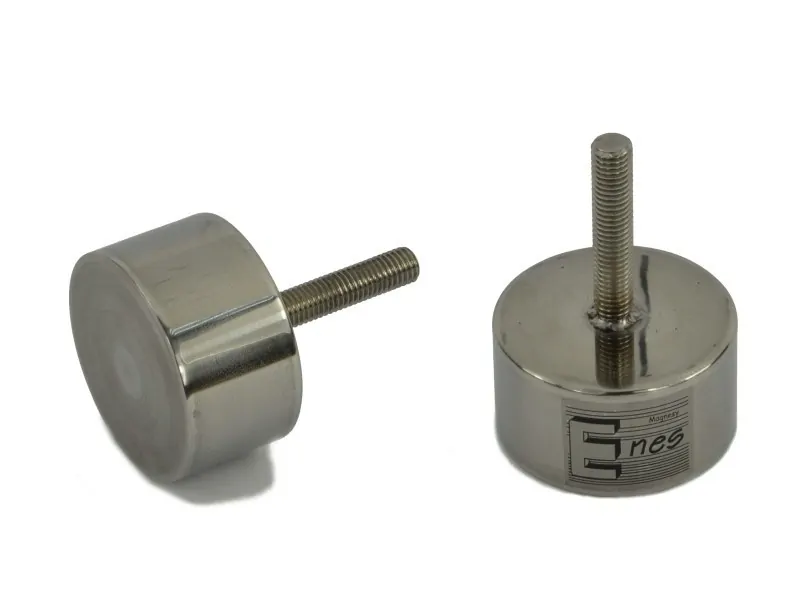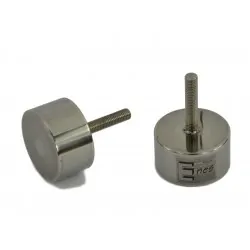- Out-of-Stock



Holding magnet (waterproof) is closed in a housing made of AlSi 304 acid-proof steel with external thread M8. There is a neodymium magnet inside. Thanks to a relatively high pull force, it is ideal for securely hold both small and large and heavy elements. It also may be used to move small steel details from one place to another. The solid construction ensures long-term use.
In the holding magnet sintered neodymium magnets (NdFeB) with wide range of activity were used. The maximum working temperature for holding magnets involving neodymium magnets is 80oC.
The pull force given refers to hoisting capacity measured in optimal conditions, by using as a backing plate a sheet made of low-carbon steel, 10 [mm] thick, of smooth surface and with the force acting perpendicularly, in room temperature.
Notice: the pull force given should be treated as only a comparative value.
An actual pull force depends on the following factors:
We generally recommend individual checking of the holding magnet in any specific working conditions.